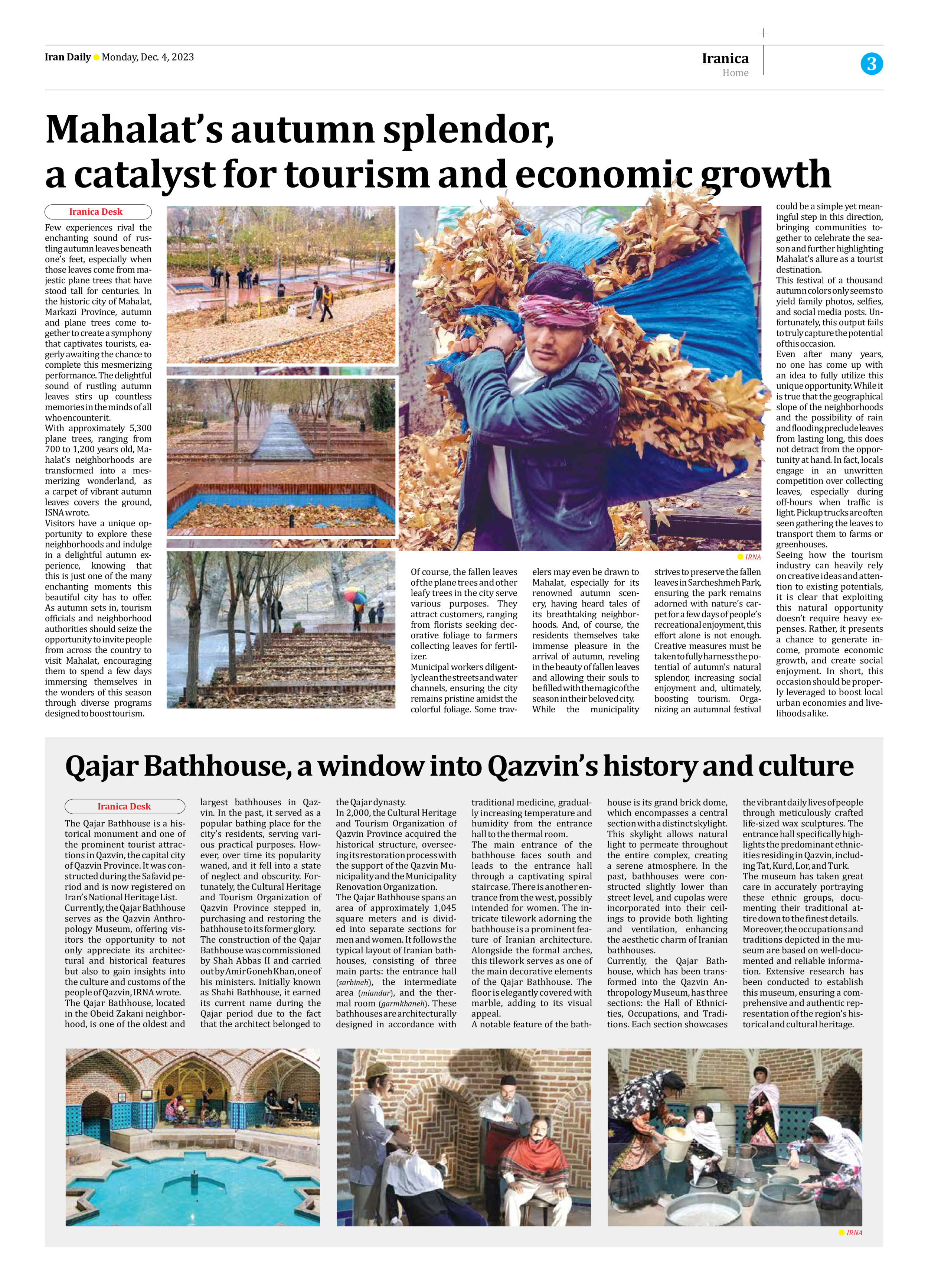
Qajar Bathhouse, a window into Qazvin’s history and culture
Iranica Desk
The Qajar Bathhouse is a historical monument and one of the prominent tourist attractions in Qazvin, the capital city of Qazvin Province. It was constructed during the Safavid period and is now registered on Iran’s National Heritage List.
Currently, the Qajar Bathhouse serves as the Qazvin Anthropology Museum, offering visitors the opportunity to not only appreciate its architectural and historical features but also to gain insights into the culture and customs of the people of Qazvin, IRNA wrote.
The Qajar Bathhouse, located in the Obeid Zakani neighborhood, is one of the oldest and largest bathhouses in Qazvin. In the past, it served as a popular bathing place for the city’s residents, serving various practical purposes. However, over time its popularity waned, and it fell into a state of neglect and obscurity. Fortunately, the Cultural Heritage and Tourism Organization of Qazvin Province stepped in, purchasing and restoring the bathhouse to its former glory.
The construction of the Qajar Bathhouse was commissioned by Shah Abbas II and carried out by Amir Goneh Khan, one of his ministers. Initially known as Shahi Bathhouse, it earned its current name during the Qajar period due to the fact that the architect belonged to the Qajar dynasty.
In 2,000, the Cultural Heritage and Tourism Organization of Qazvin Province acquired the historical structure, overseeing its restoration process with the support of the Qazvin Municipality and the Municipality Renovation Organization.
The Qajar Bathhouse spans an area of approximately 1,045 square meters and is divided into separate sections for men and women. It follows the typical layout of Iranian bathhouses, consisting of three main parts: the entrance hall (sarbineh), the intermediate area (miandar), and the thermal room (garmkhaneh). These bathhouses are architecturally designed in accordance with traditional medicine, gradually increasing temperature and humidity from the entrance hall to the thermal room.
The main entrance of the bathhouse faces south and leads to the entrance hall through a captivating spiral staircase. There is another entrance from the west, possibly intended for women. The intricate tilework adorning the bathhouse is a prominent feature of Iranian architecture. Alongside the formal arches, this tilework serves as one of the main decorative elements of the Qajar Bathhouse. The floor is elegantly covered with marble, adding to its visual appeal.
A notable feature of the bathhouse is its grand brick dome, which encompasses a central section with a distinct skylight. This skylight allows natural light to permeate throughout the entire complex, creating a serene atmosphere. In the past, bathhouses were constructed slightly lower than street level, and cupolas were incorporated into their ceilings to provide both lighting and ventilation, enhancing the aesthetic charm of Iranian bathhouses.
Currently, the Qajar Bathhouse, which has been transformed into the Qazvin Anthropology Museum, has three sections: the Hall of Ethnicities, Occupations, and Traditions. Each section showcases the vibrant daily lives of people through meticulously crafted life-sized wax sculptures. The entrance hall specifically highlights the predominant ethnicities residing in Qazvin, including Tat, Kurd, Lor, and Turk.
The museum has taken great care in accurately portraying these ethnic groups, documenting their traditional attire down to the finest details.
Moreover, the occupations and traditions depicted in the museum are based on well-documented and reliable information. Extensive research has been conducted to establish this museum, ensuring a comprehensive and authentic representation of the region’s historical and cultural heritage.







